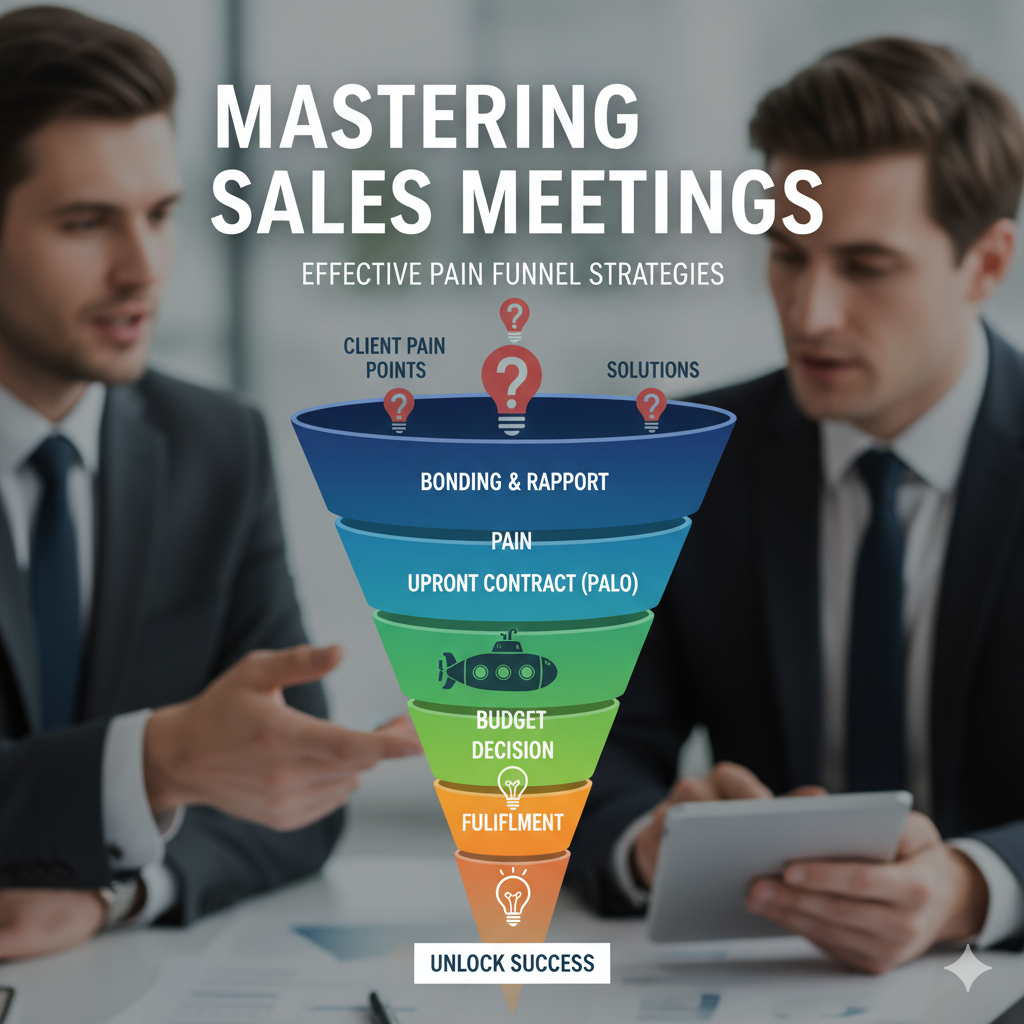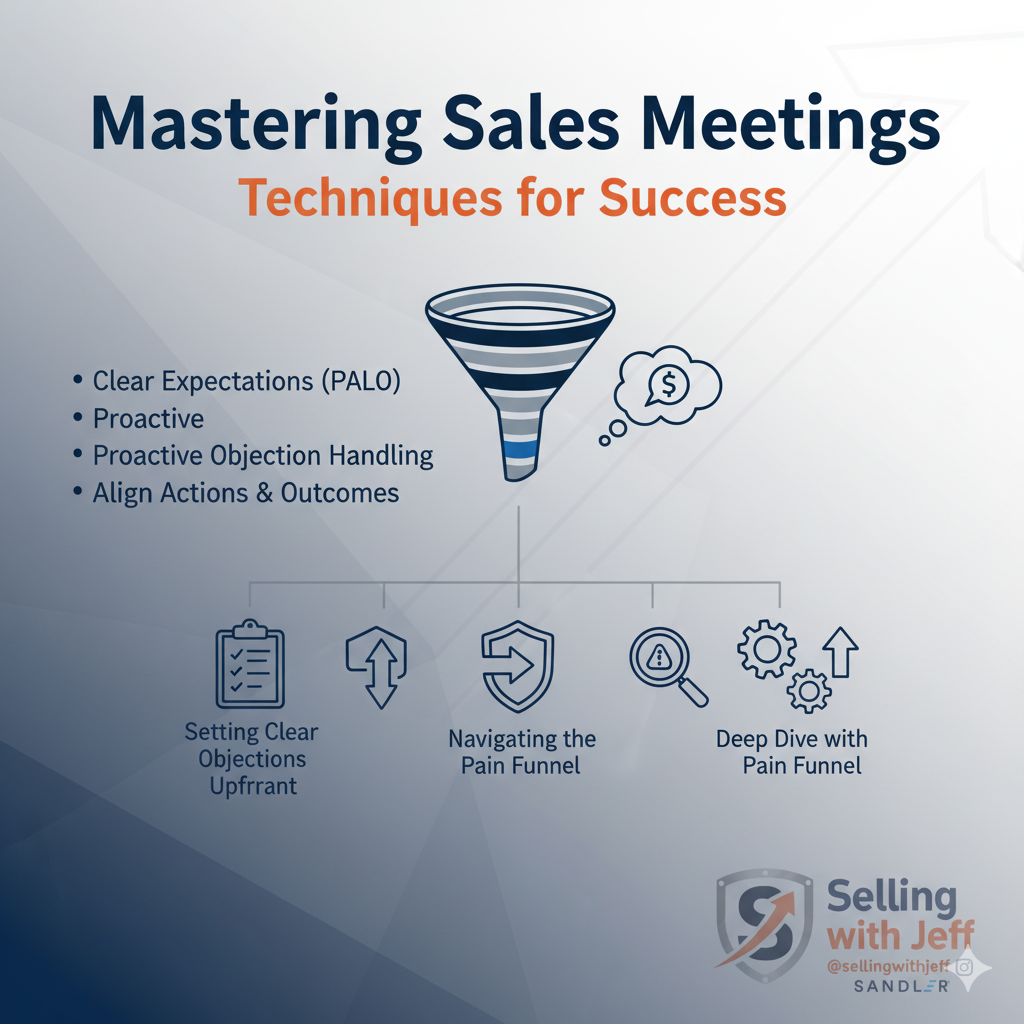Mastering Sales Meetings: Effective Pain Funnel Strategies

Unlock the secrets to conducting impactful sales meetings using pain funnel strategies.
The Importance of Identifying Client Pain Points
Understanding your client's pain points is the cornerstone of any successful sales meeting. Pain points are the specific problems or challenges that your client is experiencing, which your product or service can solve. By identifying these pain points early in the conversation, you can tailor your approach to address their specific needs, making your pitch more relevant and compelling.
Sales professionals often make the mistake of diving straight into their sales pitch without first understanding the client's unique situation. This can lead to a mismatch between what the client needs and what you are offering. Taking the time to explore and understand their pain points not only builds trust but also positions you as a problem-solver rather than just a salesperson.
Utilizing the Sandler Selling System for Success
The Sandler Selling System is a proven methodology that helps sales professionals systematically navigate through the sales process. The system is composed of seven steps: Bonding and Rapport, Upfront Contract (PALO), Pain, Budget, Decision, Fulfillment, and Post-Sell. Each step is designed to ensure that both the salesperson and the client are on the same page, building a strong foundation for a successful sales relationship.
One of the key elements of the Sandler Selling System is the concept of the "submarine," which emphasizes moving through each compartment (step) in sequence. This ensures that no critical information is overlooked and that the sales process remains structured and efficient. By adhering to this sequence, sales professionals can maintain control of the conversation and guide the client towards a mutually beneficial outcome.
Executing Effective Opening and Closing PALO
PALO, which stands for Upfront Contract, is a crucial component of the Sandler Selling System. It involves setting clear expectations at the beginning of the meeting (Opening PALO) and summarizing the agreed-upon next steps at the end (Closing PALO). This ensures that both parties understand what will happen during the meeting and what the desired outcomes are.
An effective Opening PALO sets the stage for a productive conversation. It involves outlining the agenda, confirming the time available, and clarifying the goals of the meeting. This helps to create a sense of structure and professionalism, making it easier to keep the meeting on track.
The Closing PALO is equally important as it reinforces the commitments made during the meeting. It involves summarizing the key points discussed, confirming the next steps, and setting a follow-up date. This not only helps to solidify the progress made but also ensures that both parties are aligned on what needs to happen next.
Managing Meeting Time and Maintaining Control
Time management is a critical skill for any sales professional. A well-managed meeting not only reflects professionalism but also shows respect for the client's time. One effective strategy is to allocate specific time blocks for each part of the meeting. For example, you might spend five minutes on Bonding and Rapport, five minutes on the Opening PALO, 30-40 minutes on Pain, and so on.
Maintaining control of the conversation is equally important. This involves actively listening to the client, asking probing questions, and steering the conversation back on track when it starts to veer off course. By doing so, you can ensure that the meeting remains focused and productive, ultimately leading to a successful outcome.
In conclusion, mastering the art of conducting sales meetings using pain funnel strategies can significantly enhance your effectiveness as a sales professional. By understanding and addressing client pain points, following the Sandler Selling System, executing effective PALO, and managing your meeting time, you can build stronger relationships and close more deals.


